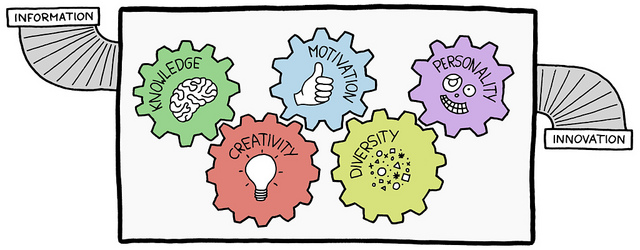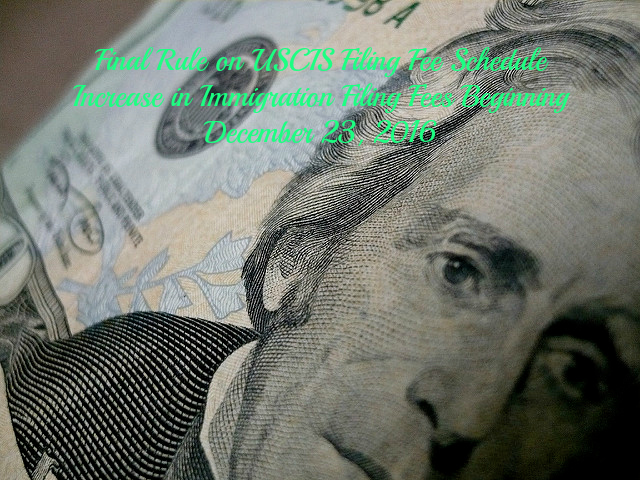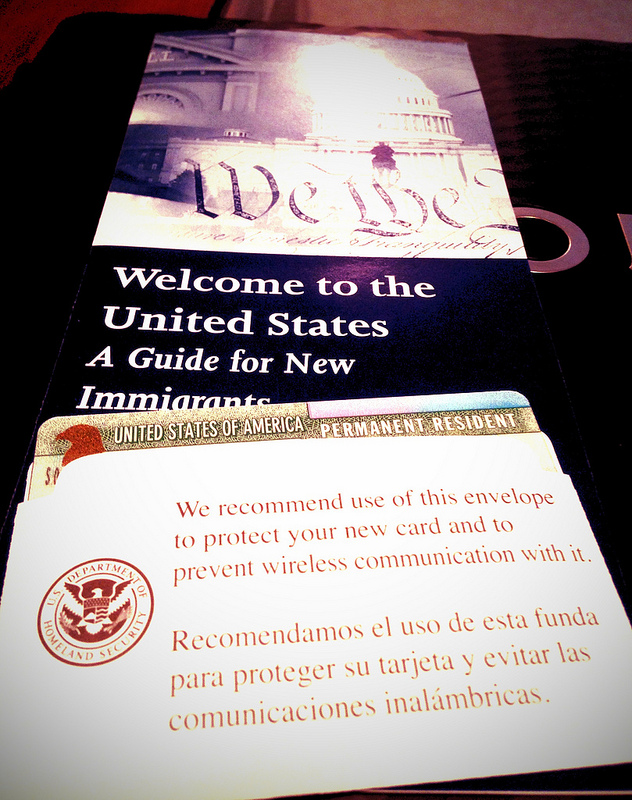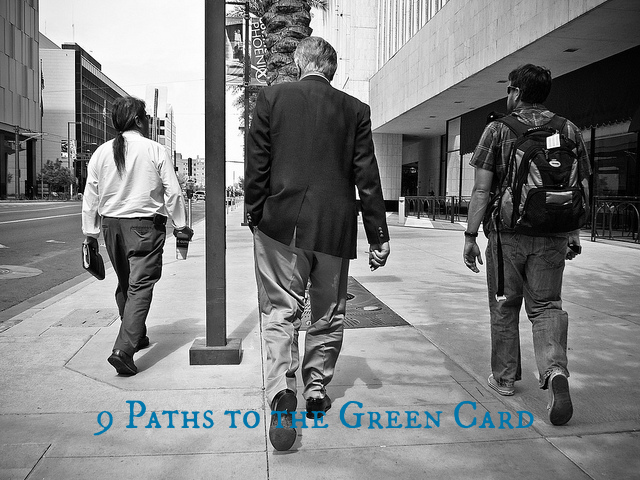UPDATE: Today, December 29, 2016, USCIS announced that previous editions of affected forms will continue to be accepted by USCIS until February 21, 2017, except for the N-400 Application for Naturalization. N-400 Application for Naturalization must be filed with the 12/23/16 edition date. No prior editions of form N-400 will be accepted by USCIS. Please remember that the new fee schedule will continue to be enforced. New form editions will contain an edition date of 12/23/16. Updated forms can be found at uscis.gov/forms. The complete fee schedule can be found at uscis.gov/forms/our-fees.
Articles Posted in Employment Based Petitions
DOS Publishes FY 2017 Annual Numerical Limits for Family and Employment-Based Preference Categories
On December 12, 2016, the Department of State published the Annual Numerical Limits for both family and employment-based visa preference categories for Fiscal Year 2017.
Family preference and employment immigrant categories are subject to numerical limitations and are divided by preference systems on the Visa Bulletin and become current based on the immigrant’s priority date. The Visa Bulletin estimates immigrant visa availability for prospective immigrants. Applicants who fall under family preference or employment categories must wait in line until an immigrant visa becomes available to them, for applicants to proceed with their immigrant visa application. Once the immigrant’s priority date becomes current per the Visa Bulletin, the applicant can proceed with their immigrant visa application. A priority date is generally the date when your relative or employer properly filed the immigrant visa petition on your behalf with USCIS. The Visa Bulletin exists due to numerical immigrant visa limitations for family-sponsored and employment-based preference categories established by the Immigration and Nationality Act (INA). Family-sponsored preference categories are limited to a minimum of 226,000 visas per year, while employment-based preference categories are limited to a minimum of 140,000 visas per year. The Visa Bulletin is a useful tool for aliens to determine when a visa will become available to them so that they may apply for permanent residence.
January and February Visa Bulletin Projections
On November 20, 2016, the Chief of the Visa Control and Reporting Division of the Department of State, Charles Oppenheim, provided his outlook on recent trends and future projections for employment-based immigrant preference categories of the Visa Bulletin.
December Visa Bulletin Predictions
- A final action date has been imposed on the EB-4 preference category for the country of Mexico in the month of December
- The non-minister EB-4 special immigrant category and the I5 and R5 classifications of the immigrant investor pilot program will expire on December 9, 2016.
- EB-1 China and EB-1 India are expected to be subject to a final action date in the near future
- A final action cut-off date will be imposed for EB-2 Worldwide, EB-2 Mexico, and EB-2 Philippines by the month of July.
January and February Projections
Regarding movement of EB-4 El Salvador/Guatemala/Honduras during the next 12 months
Oppenheim has stated that the State Department does not have any knowledge of the volume of cases adjudicated by USCIS for this preference category. Due to this lack of information, the State Department does not know at what rate USCIS will pre-adjudicate these cases once the final action date is in place. The reason the December cut-off date for Mexico was imposed was because there was a large number of EB-4 Mexico petitions processed with 2015 and 2016 priority dates. A retrogression of the EB-4 final action date for these countries is not expected to occur during this fiscal year, despite high demand. There is currently a very high level of demand in this category that is expected to continue. Typically, when a final action cut-off date is imposed, demand increases, because applicants rush to apply quickly before a retrogression is imminent.
Final Rule Benefitting EB-1, EB-2, and EB-2 Immigrant Workers and Certain Highly Skilled Nonimmigrant Workers with an I-140
The Department of Homeland Security is expected to publish a final rule tomorrow November 18, 2016 benefitting EB-1, EB-2, and EB-3 employment-based immigrant workers and highly-skilled nonimmigrant foreign workers. The final rule is effective January 17, 2017. The final rule will streamline the process for employment based sponsorship of nonimmigrant workers for lawsuit permanent resident status (LPRs), increasing job portability, and promoting stability, flexibility, and transparency in the way DHS applies its policies and regulatory practices to these programs. These changes were proposed in order to better equip U.S. employers to employ and retain highly skilled foreign workers who are the beneficiaries of employment-based immigrant visa petitions known as Form I-140 petitions. The new rule will allow foreign workers to have more flexibility, and affords workers the opportunity to further their careers by accepting promotions, giving them the freedom of being able to change positions with current employers, change employers, or pursue other employment.
The final rule conforms with longstanding policies and practices in accordance with the American Competitiveness and Workforce Improvement Act of 1998 (ACWIA) and the American Competitiveness in the Twenty-first Century Act of 2000 (AC21). The final rule seeks to further enforce the principles embodied in these pieces of legislation by providing nonimmigrant workers who have been sponsored for permanent residency based on the filing of an I-140 petition, greater flexibility and job portability, while expanding the competitiveness of American employers, boosting the U.S. economy, and protecting American workers. The final rule also clarifies and improves DHS policies and practices outlined in policy memoranda and precedent decisions of the Administrative Appeals Office. The final rule seeks to clarify regulatory policies in order to provide greater transparency to stakeholders. The final rule also clarifies interpretative questions related to ACWIA and AC21.
Your Daily Immigration Updates: Increase in Filing Fees, Closing Period for DV-2018, & TPS Updates for Nepal, Guinea, Liberia, and Sierra Leone
In this post we bring you your daily dose of immigration updates. For more information on the immigration services we provide please visit our website. For a free first legal consultation please contact our office. It is our pleasure to accompany you on your immigration journey.
USCIS extends TPS Designation for Nepal for 18 months
The Secretary of Homeland Security recently announced that Temporary Protected Status (TPS) for eligible nationals of Nepal will be extended for an additional 18 months, beginning December 25, 2016 through June 24, 2018. Eligible TPS applicants must either be foreign nationals of Nepal or habitually resided in Nepal. DHS will be extending current TPS Nepal Employment Authorization Cards (EADs) with a December 24, 2016 expiration date for an additional 6 months, valid through June 24, 2017.
For more information regarding TPS for Nepal please click here. For information about the TPS program please click here. Employers interested in verifying or reverifying the employment eligibility of employees who are TPS beneficiaries, may click here for more information.
EADs Extended 6 Months for Guinea, Liberia and Sierra Leone TPS Beneficiaries
Current Beneficiaries of the Temporary Protected Status (TPS) program for the designations of Guinea, Liberia, and Sierra Leone have had their TPS status extended for a period of 6 months, to expire on May 21, 2017. The Department of Homeland Security authorized this temporary extension to allow beneficiaries to make an orderly transition out of the United States, before termination of their TPS status on May 21, 2017. Current beneficiaries of the TPS program from these designations will automatically retain their TPS status until this date, and the validity of their current Employment Authorization Cards (EADs) will be extended through May 20, 2017.
Click here for more information about the 6-month extension of orderly transition before termination of TPS designations for Guinea, Liberia, and Sierra Leone. For general information about the TPS program please click here.
Final Rule on USCIS Filing Fee Schedule: Increases in Filing Fees Beginning December 23rd
Today, October 24, 2016 the Department of Homeland Security published the final rule increasing fees for certain immigration and naturalization petitions processed by U.S. Citizenship and Immigration Services (USCIS). Overall the Department of Homeland Security increased filing fees for certain petitions by an average of 21 percent. The new fees will be enforced by USCIS beginning December 23, 2016. The fee schedule has been adjusted following the agency’s decision to conduct a comprehensive review of filing fees for fiscal year 2016/2017. USCIS determined that an adjustment in the filing fees would be necessary in order for USCIS to recover costs for services expended and maintain adequate service. The proposed fee schedule was first published on May 4, 2016. The final rule clarifies that all persons applying for immigration benefits may be required to appear for biometrics services or an interview, and thus must pay the biometrics services fee accordingly.
EB-5 Investor Visa Program
The EB-5 Immigrant Investor Visa Program will be most heavily impacted by the new fee schedule. The new filing fee for Form I-924, Application for Regional Center under the Immigrant Investor Pilot Program, will increase by a rate of 186% requiring Regional Centers seeking designation under the program, to pay a filing fee of $17,795 instead of the current rate of $6,230. Regional Centers will be required to pay a $3,035 annual fee to certify their continued eligibility for the designation.
The filing fee for the I-526 Immigrant Petition by Alien Entrepreneur, an application associated with the EB-5 visa program, will increase to $3,675, a 145% increase up from the current rate of $1,500. The filing fee for an investor’s petition to remove conditions on residence remains unchanged.
Naturalization
USCIS has established a three-tiered fee schedule for naturalization applicants filing Form N-400 Application for Naturalization. First, the fee schedule includes a standard filing fee for most applicants, from a rate of $595 to $640. Second, DHS has established a reduced fee of $320 for naturalization applicants whose household income is greater than 150% but less than 200% of the Federal Poverty Guidelines. Third, there will be no filing fee for naturalization applicants who are members of the military, applicants with approved fee waivers, and others who may qualify for a fee waiver according to sections 328 or 329 of the Immigration and nationality Act (INA).
The October Visa Bulletin and Final Action Date Chart
On September 21, 2016 the United States Citizenship and Immigration Services (USCIS) posted the adjustment of status filing dates for October 2016.
If you are waiting to apply for permanent residence based on an approved family-sponsored petition (I-130) or based on an approved employment-based petition (I-140), USCIS has advised that you refer to the ‘Dates for Filing Applications’ chart on the October Visa Bulletin to determine when to file your application for permanent residence according to your priority date (the date when your relative or employer properly filed your immigrant visa petition with USCIS) and your preference category. Generally, applicants who have filed the immigrant petition and have been approved, must wait in line until an immigrant visa becomes available, before seeking adjustment of status to permanent resident. This is because availability of immigrant visas for certain classes of immigrants are limited. These preference categories appear in the Visa Bulletin, as well as the number of visas available for each preference category.
Note: For employment-based petitions if a labor certification is required to be filed with your immigrant visa petition, the priority date is the date the labor certification application was accepted for processing by the Department of Labor.
What is the Visa Bulletin and the Dual Chart System?
Every month, the Department of State releases a monthly Visa Bulletin which provides estimates on immigrant visa availability according to family-sponsored and employment-based preference categories. As you may recall, in September of last year, USCIS introduced a new chart called the ‘Dates for Filing Applications’ chart in addition to the ‘Application Final Action Date’ chart. Together this dual chart system governs when applicants may file their applications for permanent residence according to visa availability, the applicant’s preference category, and the date of filing (priority date).
New Rule Considers Granting International Entrepreneurs 2-YR Parole
Today August 26, 2016 we bring entrepreneurs around the world exciting news regarding a new measure USCIS plans to implement designed to benefit entrepreneurs of startup companies. USCIS has announced a new proposal that will make it easier for certain foreign entrepreneurs to receive temporary permission to enter the United States, also known as ‘parole,’ for the purpose of starting or scaling their start-up business enterprise in the United States.
The rule has been referred to as the ‘International Entrepreneur Rule’ which will give the Department of Homeland Security (DHS) the authority to expand discretionary statutory parole status to eligible entrepreneurs of startup companies, who can demonstrate that the startup enterprise they are interested in creating, has a substantial potential to yield rapid growth, and job creation in the United States.
Under this new rule, DHS would be able to grant parole on a case-by-case basis to eligible entrepreneurs of startup companies who can demonstrate the following:
- At least a 15 percent ownership interest in the startup enterprise in question;
- That they take on an active and central role in the startup enterprise’s operations;
- That the startup enterprise has been formed in the United States within the past three years; and
- That the startup enterprise has proven to yield a substantial and demonstrated potential for rapid business growth and job creation as evidenced by:
- Having received a significant investment of capital of at least $345,000 from certain qualified U.S. investors that have a proven track record of success i.e. showing established records of successful investments;
- Having received significant awards or grants of at least $100,000 from federal, state, or local government entities; or
- By partially satisfying one or both of the above criteria, in addition to presenting other reliable and compelling evidence to show the startup entity’s substantial potential for rapid growth and job creation in the United States;
9 Paths to the Green Card
One of the biggest critiques of the U.S. immigration system is that there are very few options available to foreign nationals that create a direct path to permanent residency. Indeed, this is a very cruel reality for our clients. A reality that we struggle to overcome on a day to day basis. More often than not we speak to clients who simply cannot immigrate to the United States because of our antiquated immigration laws.
The immigration system boils down to two harsh realities. Generally, you may apply for permanent residence only if: 1) you have a qualifying family relationship to a legal permanent resident (LPR) or U.S. Citizen (family sponsorship) 2) you have secured employment with a U.S. company willing to sponsor your permanent residence (employment sponsorship) or 3) you belong to a special category of green card applicants and may immigrate on the basis of that category (VAWA recipients, asylees, diversity visa lottery winners etc.)
In order for you to understand the green card options available to you under the current immigration laws of the United States, we outline 9 of the most common ways to obtain permanent residence below:
Green card based on a qualifying Family-sponsorship
You are generally eligible to apply for permanent residence if you have a qualifying family relationship with a U.S. Citizen or Legal Permanent Resident:
- If you are the immediate relative of a U.S. Citizen your relative can file Form I-130 Petition for Alien Relative on your behalf, which will allow you to file the I-485 application for Permanent Residence. Immediate relatives of U.S. Citizens include spouses, unmarried children under the age of 21 of a U.S. Citizen, and parents of U.S. Citizens 21 years of age or older.
Immediate relatives of U.S. Citizens DO NOT have to wait in line for a visa number to become available to them in order to immigrate to the United States.
- If you are the family member of a U.S. Citizen and you fall under a qualifying “preference category,” your U.S. Citizen relative may file the I-130 Petition on your behalf. Family members of U.S. Citizens that fall into a “preference category” include: unmarried sons or daughters over the age of 21, married children of any age, and brothers and sisters of U.S. Citizen petitioners 21 years of age or older.
Immigrant visa numbers for these individuals are limited and are therefore subject to a waiting period. You must wait for your priority date to become current on the Visa Bulletin, based on your preference category and country of charge ability, before you are eligible to either apply for adjustment of status in the United states, or apply for an immigrant visa at a U.S. Consular post abroad (if you reside overseas).
Entrepreneur Immigration: Is the E-2 visa or L-1 visa right for you?
If you are a foreign entrepreneur, you have probably discovered that the United States immigration system is very limited in that there are very few visa options available to entrepreneurs that do not tie down the entrepreneur to a foreign employer, as is the case for the L and H visas. To make matters worse, if your ultimate goal is to obtain a green card to live and work in the United States permanently, you must work for an American employer willing to sponsor your adjustment of status. Although there are few exceptions, the main avenue through which entrepreneurs can gain permanent residence is either through family-sponsorship or employment-based sponsorship.
To obtain permanent residence through an employer you must either a) be a professional employed by a U.S. employer willing to sponsor your green card b) demonstrate extraordinary ability in your industry (science, arts, education, business, or athletics, c) work in a management or executive position abroad requiring international transfer to the United States or d) qualify as an EB-5 investor. In either of these cases, the U.S. employer must submit the I-140 Immigrant Petition for Alien Worker for you, before you can apply for permanent residence. If your ultimate goal is not to obtain a green card, then you have more options available to you.
We decided to write about this topic because we have found that many entrepreneurs that visit our office are not well-informed on other visa types that put them on a more direct path to permanent residence. Often times the topic of conversation leads to the E-2 Treaty trader visa, by far the most discussed visa type among entrepreneurs. Few entrepreneurs however have heard about the L-1 visa classification, that may in some ways be more beneficial to foreign entrepreneurs wishing to live and work in the United States permanently. Below we discuss both visa types and the advantages and disadvantages of both visas.
The E-2 visa, the most talked about visa:
Without a doubt, the most popular visa option entrepreneurs ask about is the E-2 visa. Many entrepreneurs however do not know that the E-2 visa is not available to everyone, and it is not a path to permanent residence. The E-2 visa is a non-immigrant treaty investor visa that is only available to foreign nationals from specific treaty countries. The E-2 visa allows foreign nationals to carry out investment and trade activities, after making a substantial investment in a U.S. business that the foreign national will control and direct. E-2 visa investors can either purchase an existing U.S. business or start a new business.
 Visa Lawyer Blog
Visa Lawyer Blog










